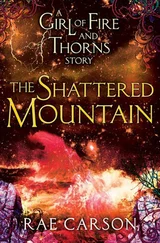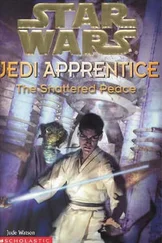Roger Allen - The Shattered Sphere
Здесь есть возможность читать онлайн «Roger Allen - The Shattered Sphere» весь текст электронной книги совершенно бесплатно (целиком полную версию без сокращений). В некоторых случаях можно слушать аудио, скачать через торрент в формате fb2 и присутствует краткое содержание. Год выпуска: 1994, ISBN: 1994, Издательство: Tor Books, Жанр: Фантастика и фэнтези, на английском языке. Описание произведения, (предисловие) а так же отзывы посетителей доступны на портале библиотеки ЛибКат.
- Название:The Shattered Sphere
- Автор:
- Издательство:Tor Books
- Жанр:
- Год:1994
- ISBN:0-312-85734-9
- Рейтинг книги:5 / 5. Голосов: 1
-
Избранное:Добавить в избранное
- Отзывы:
-
Ваша оценка:
- 100
- 1
- 2
- 3
- 4
- 5
The Shattered Sphere: краткое содержание, описание и аннотация
Предлагаем к чтению аннотацию, описание, краткое содержание или предисловие (зависит от того, что написал сам автор книги «The Shattered Sphere»). Если вы не нашли необходимую информацию о книге — напишите в комментариях, мы постараемся отыскать её.
.
Humans face two enemies—the implacably powerful Charonians who kidnapped the Earth, and the mysterious Adversary, before whom the Charonians quake in fear. Can an unlikely combination of scientists, corpses, dictators, and professional troublemakers withstand both threats and return the Earth to its proper place in the Solar System?
The Shattered Sphere — читать онлайн бесплатно полную книгу (весь текст) целиком
Ниже представлен текст книги, разбитый по страницам. Система сохранения места последней прочитанной страницы, позволяет с удобством читать онлайн бесплатно книгу «The Shattered Sphere», без необходимости каждый раз заново искать на чём Вы остановились. Поставьте закладку, и сможете в любой момент перейти на страницу, на которой закончили чтение.
Интервал:
Закладка:
“But why didn’t it hold us longer, if this is what happened?” Bernhardt asked. “I can see that the Sphere might need to have the Earth complete an orbit for some mechanical reason we don’t know about, but surely the Sphere could have held us in stasis longer and prepared a more stable orbit somehow.”
Sakalov shrugged. “My guess is that the Sphere simply did not have the energy reserves to hold the planet in stasis more than one orbit. It would require tremendous power to do all the things Wally is describing so casually. And even the Sphere has a limit on its energy output.”
“Just out of curiosity, what would happen if the Sphere was unable to provide enough power?” Bernhardt asked. “Would the Earth have dropped out of the stasis orbit?”
“Well, yes, that would be the problem. You’d get an uncontrolled spontaneous evaporation of the pinched wormhole,” Wally said, as if evaporating wormholes were some sort of annoying household nuisance, like dustballs under the bed.
“And what would that mean?” Bernhardt asked.
Wally shifted awkwardly in his seat and grinned, a bit embarrassed. “E = MC 2. Earth’s mass would be expressed as energy.”
“Which would of course be a great inconvenience to us all,” Sakalov observed, rather dryly. “The explosion would almost certainly be enough to destroy the Sphere, and probably vaporize most of the planets of the closer-in Captive Suns as well.”
Bernhard raised his eyebrows. “Just as well the Sphere knows what it is doing, then.” He bent his head back and stared at the ceiling for a moment. “Leaving the destruction of the Earth to one side, if I’m following you, what you’re describing would jibe with what people saw at the time Earth was abducted: the sky quite abruptly turning from dark to light and back again, with repeated drops through the blue-white zones that seem to be what the throat of a wormhole looks like. Many witnesses in the Northern Hemisphere saw what must have been the Sphere, but so close up that it resembled a flat plane stretching across the sky.”
“So the idea fits?” Sianna asked, feeling rather tentative about speaking up, even if it was her idea they were discussing. They were going into an awful lot of detail, considering that the discussion of stasis orbits and co-orbiting R-H sets was wholly hypothetical.
“So it would seem,” Bernhardt said in a voice that was quite alarmingly cheerful. “And it is not the only thing that fits. That is the splendid thing about your theory, you know. It explains everything we know to date. But it’s a good theory for two other equally important reasons. Do you know what they are?”
“Because it makes testable predictions and is subject to disproof,” Sianna blurted out, her competitive classroom instincts kicking in. It was the right answer, of course, but she instantly regretted giving it.
Bernhardt had obviously wanted her to ask for the answer, not give it. Wally gave her a funny look, as if to say even he could tell that was a rhetorical question.
“Ah, yes, exactly,” Bernhardt said, thrown off his stride just a trifle. “You have given us a theory we can test . We can study this Lone World and see if it behaves as your theory requires. We must see if we can detect commands coming from it, for example. The study should be made far easier because we can focus our attention on this one small body, rather than searching the whole vast expanse of the Sphere for Charon Central.”
Sianna nodded, not quite knowing what to say—and having no desire to speak out of turn again.
“Our friend Dr. Gruber has started already, in fact,” Sakalov said. He lifted the notepack he had been holding and gave it to Sianna. She set her cup down on the desk and took the pack. “Images and data pulled down yesterday, last night, and this morning,” Sakalov said. “Gruber wangled time on instruments all over the world, and on the Terra Nova . Have a look for yourself.”
Sometimes Sianna worried that people assumed she was much smarter than she really was. How in the world did Sakalov come to assume she was smart enough to interpret raw images and data without guidance or explanation?
But then she switched on the notepack, and all doubts faded away. It was all so obvious .
“Gruber searched the entire circumference of the Lone World’s orbit—or at least the fraction of it currently visible from Earth,” Sakalov said. “Since we are nearly over the Sphere’s northern pole, and the Lone World orbits along the Sphere’s equator, we can see about nine-tenths of its orbit from here. Those are all visible-light images you have there, but we are hoping for infrared and ultraviolet from the Terra Nova .”
Sianna nodded, not really hearing what he was saying. There they were. Five, six, seven of them, all of them showing the signs of heavy magnification and intense image-enhancement. There were fuzzy, faint, murky images of ring shapes, some seen nearly from the edge, others somewhat foreshortened, and one perfectly face-on. The black holes at their center would be completely invisible, of course, but Sianna found herself straining to see them all the same.
“The only thing I got wrong is the number of them,” Wally said proudly. “We only have images on seven R-H sets so far, but the spacing of those tells us there must be eighteen of them altogether, and including at least one R-H set orbiting the Lone World.”
“A prediction tested and proved correct right there,” Bernhardt said.
Sianna nodded absently and worked the display controls. As Bernhardt himself had pointed out, pretty pictures were all very well, but there was more to analysis than that.
Ursula Gruber had directed whatever detectors she could find, of whatever kind they might be, at the Lone World.
The trouble was that the Lone World was a dim, tiny target at a great distance. It was smaller than the Moon, eight times farther from Earth than Pluto had been from the Sun, and separated by only a few million kilometers from a larger object, an object known to throw off a bit of radiation itself—the Sphere. In fact, to make things even trickier, the Lone World was transiting the Sphere at the moment. “Transiting” was nothing more than a fancy way of saying the Lone World was in front of the Sphere as seen from Earth; the positioning made it that much harder to observe the smaller body.
“Obviously, you’re looking for something that could be a communications signal, a command system, right?” Sianna asked.
“That’s right,” Dr. Bernhardt said. “Gruber’s already pulled in more data than one analysis team could handle in a week. Once we find the correct command channel, there will be less to analyze, but for now we must examine every wavelength we can detect.”
“Why do you assume the Charonians will only use one data channel?” Sianna asked. “We use more than one frequency, and we know they do, too.”
Bernhardt looked confused for a moment. He took his feet down off the desk and turned to face Sianna directly. “I beg your pardon?” he asked.
“The first signal they intercepted back in the Solar System. The Shattered Sphere signal and reply,” Sianna said, paying more attention to the data discrimination reports in the notepack than to her own words. Gruber had picked up a lot of data already, in IR, UV, and lots of radio bands, and rejected them all as “natural” or “static.” How could she be so sure?
“Ah, Miss Colette, you were discussing the first Charonian signal received?” Sakalov said, rather gently.
“Huh? Oh. Right. The first signal was at a frequency of twenty-one centimeters, with the reply at forty-two centimeters. So we know they use more than one bandwidth for signaling. That only makes sense—some frequencies are better for a given purpose than others. One might allow you to transmit more data more quickly, but another might punch through a dust cloud more easily.”
Читать дальшеИнтервал:
Закладка:
Похожие книги на «The Shattered Sphere»
Представляем Вашему вниманию похожие книги на «The Shattered Sphere» списком для выбора. Мы отобрали схожую по названию и смыслу литературу в надежде предоставить читателям больше вариантов отыскать новые, интересные, ещё непрочитанные произведения.
Обсуждение, отзывы о книге «The Shattered Sphere» и просто собственные мнения читателей. Оставьте ваши комментарии, напишите, что Вы думаете о произведении, его смысле или главных героях. Укажите что конкретно понравилось, а что нет, и почему Вы так считаете.









![Ширли Мерфи - The Shattered Stone [calibre]](/books/436059/shirli-merfi-the-shattered-stone-calibre-thumb.webp)


